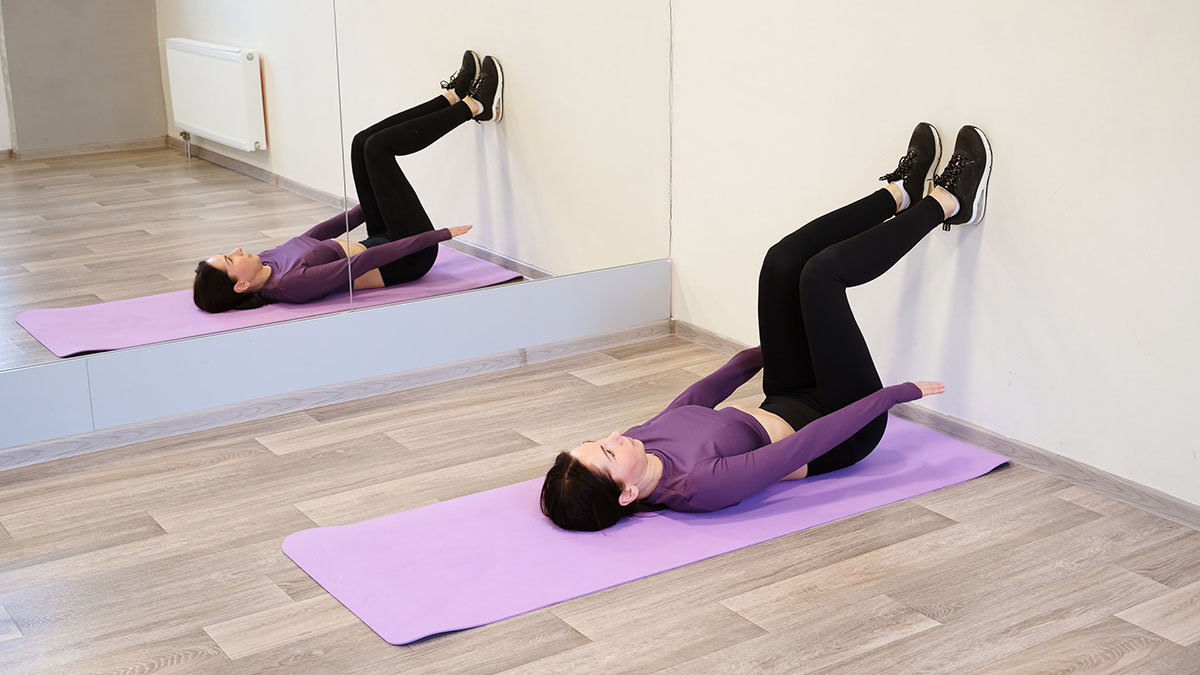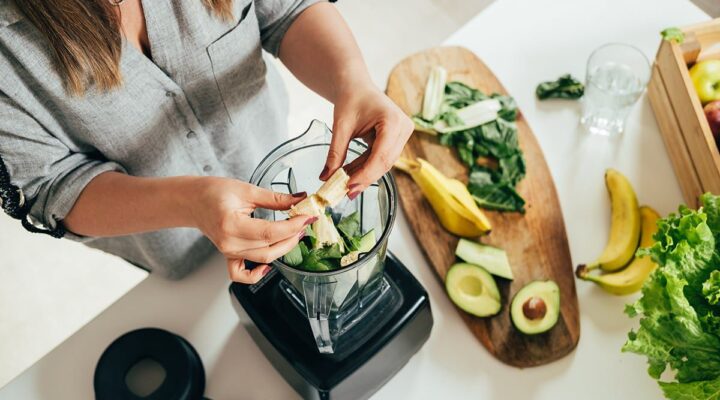Wall Pilates Is Set to Be the Workout of the Summer – Here’s What It Involves

Anyone who has spent some time scrolling through TikTok lately will know that Pilates is shaping up to be the biggest fitness trend of the year. But if you’ve already grown tired of classic on-mat exercises, a new riff on the buzzy workout is set to bring a fresh vertical challenge to your training.
Dubbed wall Pilates, the deliciously simple method involves using a blank wall as support to add a spicy hit of resistance to a regular lunchtime sweat sesh. In recent weeks, wall Pilates has gone from strength to strength on TikTok, racking up a staggering 42.6 million views on the platform.
While some types of Pilates, such as Reformer or Cadillac, require bulky specialist equipment or an expensive studio membership, the beauty of wall Pilates is that anyone can give it a go, wherever they are in the world. All you need is a blank wall and a workout mat.
Keen to get involved? Read on to learn more about the benefits of throwing a wall into your next workout. And while you’re here, check out our guide to cross-training with Pilates this year.

What is wall Pilates?
Wall Pilates is a form of full-body, low-impact exercise that aims to strengthen muscles while improving mobility and postural alignment.
If you’ve ever taken a Pilates class on a Reformer machine, you’ll know that the humble footbar is a key piece of apparatus for intensifying basic movements like single leg lifts and hip thrusts. Typically found at the front of the spring-loaded carriage, this adjustable bar is used to support the hands and feet while you’re pulsing through challenging balance movements.
In wall Pilates, the wall essentially replicates the role of the footbar, giving your arms and legs the support and stability needed to cycle through difficult exercises while still maintaining good form. Classes range from 15 to 45 minutes in length, and typically involve placing a mat flush to the edge of a blank wall and using the surface as an extra prop to elevate the legs while lying down.
What are the benefits of wall Pilates?
In general, Pilates workouts have exploded in popularity because of their potent ability to build strength, balance, flexibility, and stability all in one go.
That said, there are a few specific benefits to wall Pilates that can supercharge your current training efforts. Using the wall can bring an extra resistance challenge to classic Pilates movements like swans, hip thrusts, and single leg crunches. The reason is simple: when your feet are planted on a wall, your legs are elevated to a higher position, which puts a greater emphasis on your glutes and core.
But while the wall can make exercises torturously more difficult, it can also be your saviour when it comes to staying balanced, bringing more stability and control to strengthening moves. If you usually struggle with falls and wobbles in Pilates classes, the wall is an effective prop for assisting stretches and single leg movements, especially if you slip on a pair of grippy socks beforehand.
The wall can also act as a guide in certain movements, challenging you to keep your posture and form in check. A good example is side stretches or wall angels. Having a surface behind your back pushes you to keep your arms flush to the wall, so you get the most out of the stretch.
Plus, wall Pilates can be performed almost anywhere – whether it’s your living room, hotel room, or your local gym space. So, if you usually keep fit with a strict schedule of Reformer classes, wall workouts can be a useful tool for keeping your training momentum high when you’re unable to physically get to the studio.

How to get started with wall Pilates
As we’ve touched on already, the great thing about wall Pilates is that it’s super accessible to all ages and budgets. Even if you’re completely new to the method, spending your lunch break taking a quick 15-minute class can be instantly effective, delivering relief to muscles tight from hunching over a laptop or sitting in one position for too long.
If you’re curious about giving it a whirl, there are lots of free wall Pilates classes on YouTube. Quick tip: it’s a good idea to check the training credentials of an instructor before committing to a class to ensure they are qualified to teach the method safely. As a basic rule of thumb, look for a teacher that has a Level 3 Diploma in Pilates.
On that note, it may also be worth taking a beginner’s mat class at a local studio so you can learn the correct Pilates form and get hands-on adjustments. Once you’ve got the basics nailed, you can then build an at-home wall Pilates habit with the confidence that you’re performing the exercises correctly and safely.


















